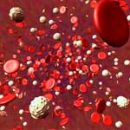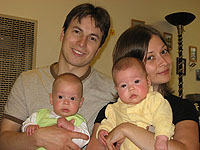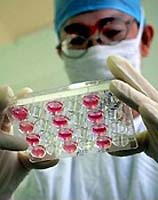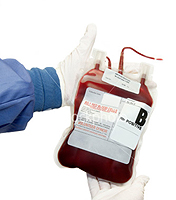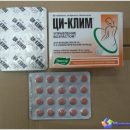Treatment of agranulocytosis - it's not easy and one pills can not do here. In combating it today, several methods apply. The easiest of them is the abolition of the drug, further complicated - sometimes it comes to even before transfusion of leukocyte mass.
Content
Agranulocytosis There are congenital and acquired. Acquired agranulocytosis are two species - myelotoxic agranulocytosis (occurring for example, when exposed to ionizing radiation or cytotoxic drugs) and immune agranulocytosis, in which autoantibodies appear in the blood (for example, with diseases such as red lupus, autoimmune thyroiditis), or antibodies to granulocytes appearing after the reception of drugs and acquire when contacting the body after connecting to protein properties of antigen.
Agranulocytosis is usually acute, and mortality at the same disease reaches 80%.
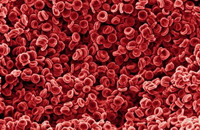 Treatment of such a disease as agranulocytosis is not limited to the reception of drugs, to combat it, as a rule, have to use several methods.
Treatment of such a disease as agranulocytosis is not limited to the reception of drugs, to combat it, as a rule, have to use several methods.
Elimination of causal factors
The most first action in the fight against agranulocytosis is the elimination of causal factors (termination of the reception of myelotoxic tools, eliminating the effect of myelotoxic chemicals, ionizing radiation, infection). Very often, this leads to independent restoration of normal blood formation.
Creating sterile conditions for the patient
Cleanliness plays not the last role in the treatment of this disease, so the patients with agranulocytosis should be placed in aseptic conditions (special boxes or chambers), it is necessary to provide quartzing of these chambers, to limit visitors to patients with relatives. The listed activities also serve as prevention of the development of infectious complications, which very often take a serious flow and may cause the death of patients with agronomulocytosis.
Prevention and treatment of infectious complications
Prevention of infectious complications - it is very important and consists in the appointment of myelonetoxic antibiotics. Although with agranocytosis with the number of leukocytes to 1.5-109 / l, as a rule, antibacterial therapy is not appointed. Antibiotic treatment is carried out before exiting agranulocytosis. During such treatment, antifungal antiforms (Nystatin, Lev Room and DR.). In the complex therapy of infectious complications in agranulocytosis, it is also recommended to use intravenously immunoglobulin at a dose of 400 mg / kg once and intravenous administration of anti-staphylococcal plasma 100-150 ml 1 time per day for 4-5 days.
Transfusion of leukocyte mass
With a sharply pronounced reduction of leukocytes (in the absence of anti-gositic antibodies), some hematologists recommend to transfusion of leukocyte mass or frosthed leukocytes 2-3 times a week before exiting agranulocytosis. However, to prevent sensitization (increasing sensitivity) patient with overfit leukocytes and exacerbation of leukopenia, it is necessary to try to select the leukocyte mass, taking into account compatibility with the leukocytes of a particular patient.
Treatment of glucocorticoids
Glucocorticoid preparations are used primarily with immune agranocytosis. Glucocorticoids stimulate granulocytopoesees and inhibit the products of anti-gosetic antibodies. In this case, it is usually used prednisone in a daily dose from 40 to 100 mg to normalization of the number of leukocytes, followed by a gradual decrease in the dose.
Lakeopoese stimulation
In complex therapy of agranulocytosis, leucopopower stimulants are often used, for example: sodium nucleicate 5 ml of 5% solution 2 times a day to introduce intramuscularly or take inward 0.2-0.4 g 3-5 times a day; leucogen 0.02 g take 3 times a day, pentoxyl 0.1-0.15 g 3-4 times a day after meals. The course of treatment with these drugs is 2-4 weeks, depending on the severity of the disease.
Colonsessulating factors are also used - mraterns, lekukox 3-10 μg / kg, enter subcutaneously for 7-10 days.
Disinfecting therapy
In pronounced intoxication (poisoning) of the body, disinfecting therapy is carried out: in this case, hemodhetum 400 ml is administered intravenously, 5% glucose solution 500 ml, isotonic solution of sodium chloride or Ringer's solution 0.5-1 l.

